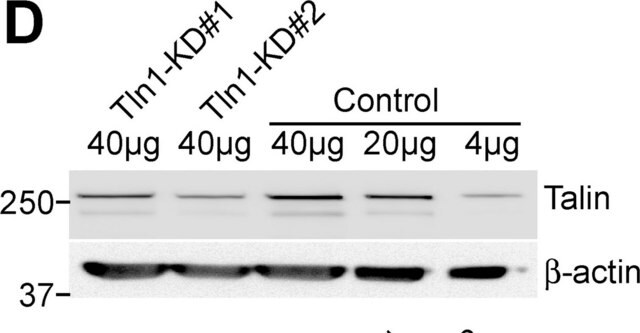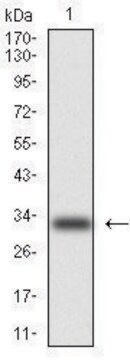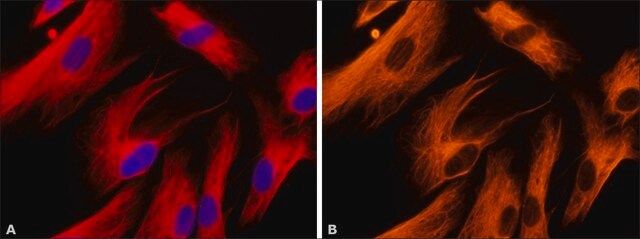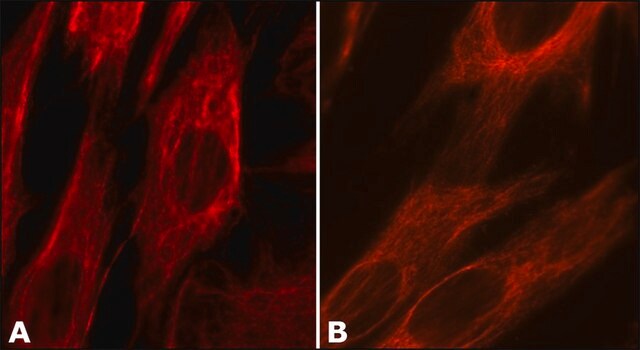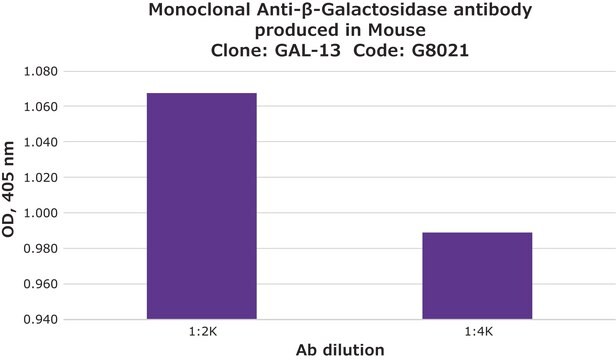Kluczowe dokumenty
V4630
Anti-Vimentin antibody produced in goat
whole antiserum
Synonim(y):
Anti-F5H288
About This Item
Polecane produkty
pochodzenie biologiczne
goat
Poziom jakości
białko sprzężone
unconjugated
forma przeciwciała
whole antiserum
rodzaj przeciwciała
primary antibodies
klon
polyclonal
masa cząsteczkowa
antigen 58 kDa
zawiera
15 mM sodium azide
reaktywność gatunkowa
wide range, human
metody
immunohistochemistry (formalin-fixed, paraffin-embedded sections): suitable
immunohistochemistry (frozen sections): suitable
indirect immunofluorescence: 1:20 using formalin-fixed, paraffin-embedded sections of human tissue
western blot: 1:50 using HS-68 human foreskin cell extract
numer dostępu UniProt
Warunki transportu
dry ice
temp. przechowywania
−20°C
docelowa modyfikacja potranslacyjna
unmodified
informacje o genach
human ... VIM(7431)
Opis ogólny
Specyficzność
Immunogen
Zastosowanie
- immunohistochemistry
- western blotting
- immunocytochemistry
- flow cytometry
Chromatin immunoprecipitation (1 paper)
Immunocytochemistry (1 paper)
Immunofluorescence (1 paper)
Immunohistochemistry (1 paper)
Działania biochem./fizjol.
Oświadczenie o zrzeczeniu się odpowiedzialności
Nie możesz znaleźć właściwego produktu?
Wypróbuj nasz Narzędzie selektora produktów.
polecane
Kod klasy składowania
13 - Non Combustible Solids
Klasa zagrożenia wodnego (WGK)
WGK 1
Temperatura zapłonu (°F)
Not applicable
Temperatura zapłonu (°C)
Not applicable
Środki ochrony indywidualnej
Eyeshields, Gloves, multi-purpose combination respirator cartridge (US)
Wybierz jedną z najnowszych wersji:
Masz już ten produkt?
Dokumenty związane z niedawno zakupionymi produktami zostały zamieszczone w Bibliotece dokumentów.
Klienci oglądali również te produkty
Nasz zespół naukowców ma doświadczenie we wszystkich obszarach badań, w tym w naukach przyrodniczych, materiałoznawstwie, syntezie chemicznej, chromatografii, analityce i wielu innych dziedzinach.
Skontaktuj się z zespołem ds. pomocy technicznej



